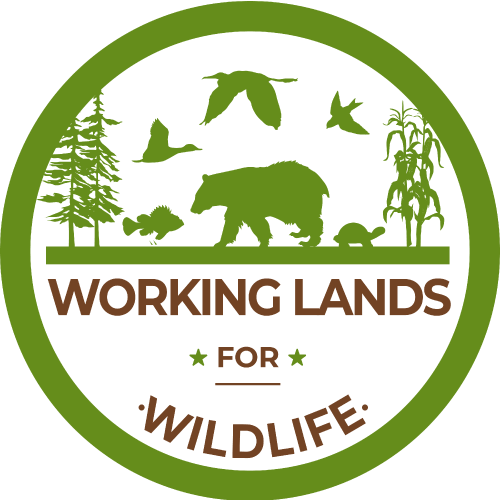-
 Predicting the Occurrence of Cave-Inhabiting Fauna Based on Features of the Earth Surface Environment
Predicting the Occurrence of Cave-Inhabiting Fauna Based on Features of the Earth Surface Environment
-
by
Rosanne Hessmiller
—
published
Feb 01, 2018
—
filed under:
Cave and Karst
Final Report
Located in
Projects
/
Science Investments
/
Classification and Mapping of Cave and Karst Resources
-
Assessing Vulnerability of Species and Habitats to Large-scale Impacts: CCVA
-
by
Rosanne Hessmiller
—
published
Aug 31, 2015
—
last modified
Mar 29, 2021 08:04 PM
New vulnerability assessments for 41 species and 3 habitats in the Appalachians are now available. The conservation community can view and search each of these assessments by relative raking or vulnerability scores, conservation status ranks, state and subregion of assessment, and higher taxonomy. In addition, principle investigators NaturServe compiled the results of 700 species assessments previously completed by other researchers as well as assessments on several habitats.
Located in
Projects
/
Science Investments
-
 CCVA Fact Sheet Meadows
CCVA Fact Sheet Meadows
-
by
Rosanne Hessmiller
—
published
Jan 26, 2018
CCVA Meadow
Located in
Projects
/
…
/
Assessing Vulnerability of Species and Habitats to Large-scale Impacts
/
CCVA Fact Sheets
-
 CCVA Fact Sheet: Meadows and Marshlands
CCVA Fact Sheet: Meadows and Marshlands
-
by
Rosanne Hessmiller
—
published
Jan 26, 2018
Meadows are open grasslands where grass and other non-woody plants are the primary vegetation. With no tree
coverage, meadows are typically open, sunny areas that attract flora and fauna that require both ample space and
sunlight. These conditions allow for the growth of many wildflowers and are typically important ecosystems for
pollinating insects. Marshlands are like meadows in that they typically have no tree coverage and host primarily
grasses and woody plants. However, a defining characteristic of marshlands is their wetland features.
Predicted climate change will largely impact changes in temperature and moisture availability in meadows and
marshlands systems, likely having a cascading effect on a species habitat and increasing stress to many of these
species. The Appalachian LCC funded NatureServe to conduct vulnerability assessments on a suite of plants,
animals, and habitats within the Appalachians. These assessments can be used as an early warning system to alert
resource managers about changing conditions.
Located in
Projects
/
…
/
Assessing Vulnerability of Species and Habitats to Large-scale Impacts
/
CCVA Fact Sheets
-
 CCVA Fact Sheet: Forest and Woodlands
CCVA Fact Sheet: Forest and Woodlands
-
by
Rosanne Hessmiller
—
published
Jan 26, 2018
Forest/Woodland habitats describe large areas primarily dominated by trees, with moderate ground
coverage, such as grasses and shrubs. Density, tree height, and land use may all vary, though woodland is
typically used to describe lower density forests. A forest may have an open canopy, but a woodland must
have an open canopy with enough sunlight to reach the ground and limited shade.
Predicted climate change will largely impact changes in temperature and moisture availability in forest/
woodlands systems, likely having a cascading effect on a species habitat and increasing stress to many
of these species. The Appalachian LCC funded NatureServe to conduct vulnerability assessments on a
suite of plants, animals, and habitats within the Appalachians. These assessments can be used as an early
warning system to alert resource managers about changing conditions.
Located in
Projects
/
…
/
Assessing Vulnerability of Species and Habitats to Large-scale Impacts
/
CCVA Fact Sheets
-
 CCVA Fact Sheet: Open Woodlands
CCVA Fact Sheet: Open Woodlands
-
by
Rosanne Hessmiller
—
published
Jan 26, 2018
Open Woodlands
Used generally to describe low density forests, open woodland ecosystems contain widely spaced trees
whose crowns do not touch, causing for an open canopy, insignificant midstory canopy layer, sparse
understory and where groundcover is the most obvious feature of the landscape dominated by diverse
flora (grasses, forbes, sedges). Open Woodlands provide habitat for a diverse mix of wildlife species,
several of which are of conservation concern, such as Red Headed Woodpecker, Prairie Warbler,
Kentucky Warbler, Northern Bobwhite and Eastern Red Bat.
Predicted climate change will largely impact changes in temperature and moisture availability in open
woodlands systems, likely having a cascading effect on a species habitat and increasing stress to many
of these species. The Appalachian LCC funded NatureServe to conduct vulnerability assessments on a
suite of plants, animals, and habitats within the Appalachians. These assessments can be used as an early
warning system to alert resource managers about changing conditions.
Located in
Projects
/
…
/
Assessing Vulnerability of Species and Habitats to Large-scale Impacts
/
CCVA Fact Sheets
-
Stream Classification System for the Appalachian LCC
-
by
Rosanne Hessmiller
—
published
Aug 07, 2015
—
last modified
Jun 02, 2025 01:11 PM
—
filed under:
Aquatic,
Stream Classification,
Research
Located in
Projects
/
Science Investments
-
 Forum Area
Forum Area
-
by
Rosanne Hessmiller
—
last modified
Feb 26, 2015 03:30 PM
Located in
Projects
/
…
/
Workspace
/
Discussions
-
Ecosystem Benefits and Risks Final Narrative
-
by
Rosanne Hessmiller
—
published
Feb 02, 2018
—
last modified
Jun 08, 2018 03:19 PM
Located in
Tools & Resources
-
LanDat Assessment Tool
-
by
Rosanne Hessmiller
—
published
Feb 02, 2018
—
last modified
Jun 08, 2018 03:21 PM
Located in
Tools & Resources


